White oak floors are a stylish and timeless flooring option that can be customized to suit your design needs. Learn the differences between red and white oak, sand and stain flooring versus engineered hardwood, and more! White oak hardwood flooring might be exactly what you’re looking for – it’s a soft, subtle color with superior durability!
A floor sets the design foundation for the other elements in a room. You build on your floor one layer at a time to achieve the final look, with the floor supporting and grounding all of the other elements.
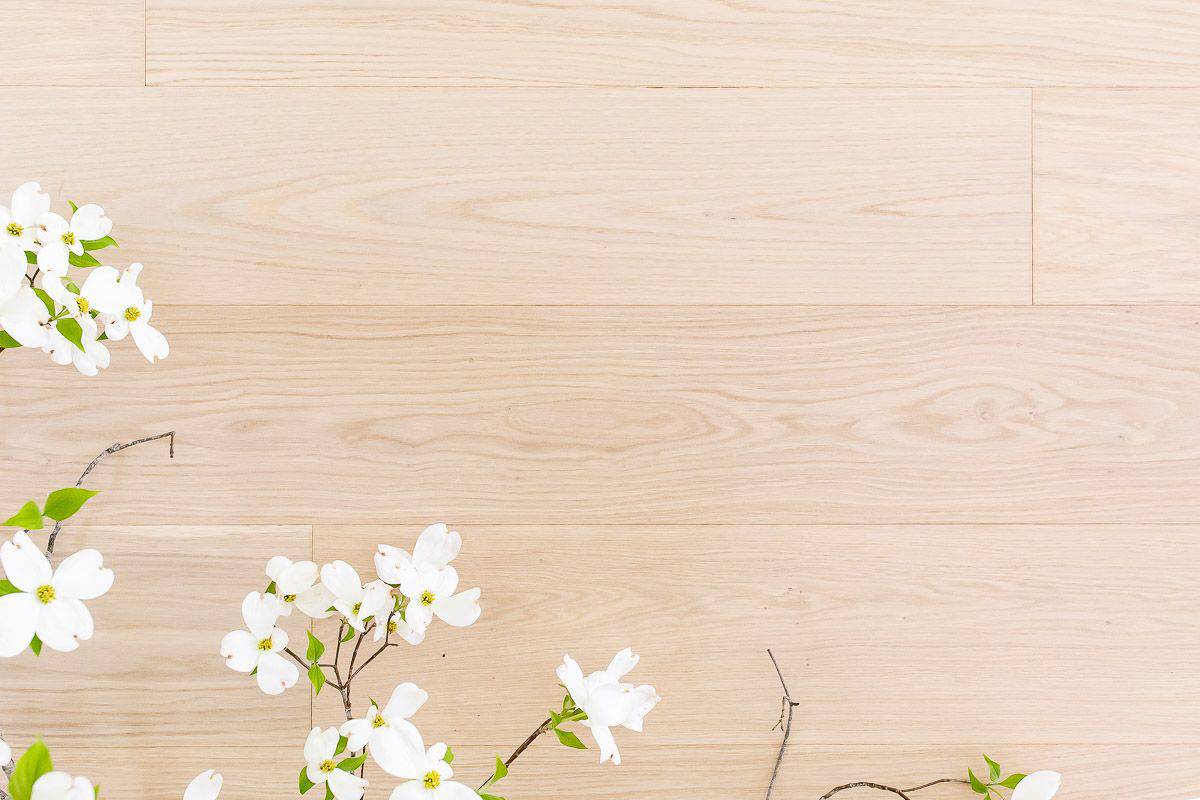
After doing a lot of research and assessing my needs and wants, I knew that white oak floors were what I wanted in my home and lake house. The neutral and durable flooring captures the essence of my family.
The white oak hardwood flooring I chose is smooth and comfortable under our feet, and also creates a comfortable and livable atmosphere in our home. See more of my favorite Lake House Decor here!
Knowing how difficult it can be to choose flooring when you’re renovating a space, I am bringing you the details, plus pros and cons of white oak floors in this complete guide!
We have traditional white oak sand and stain floors in our traditional St. Louis home, and new engineered hardwoods in our more modern lake house.
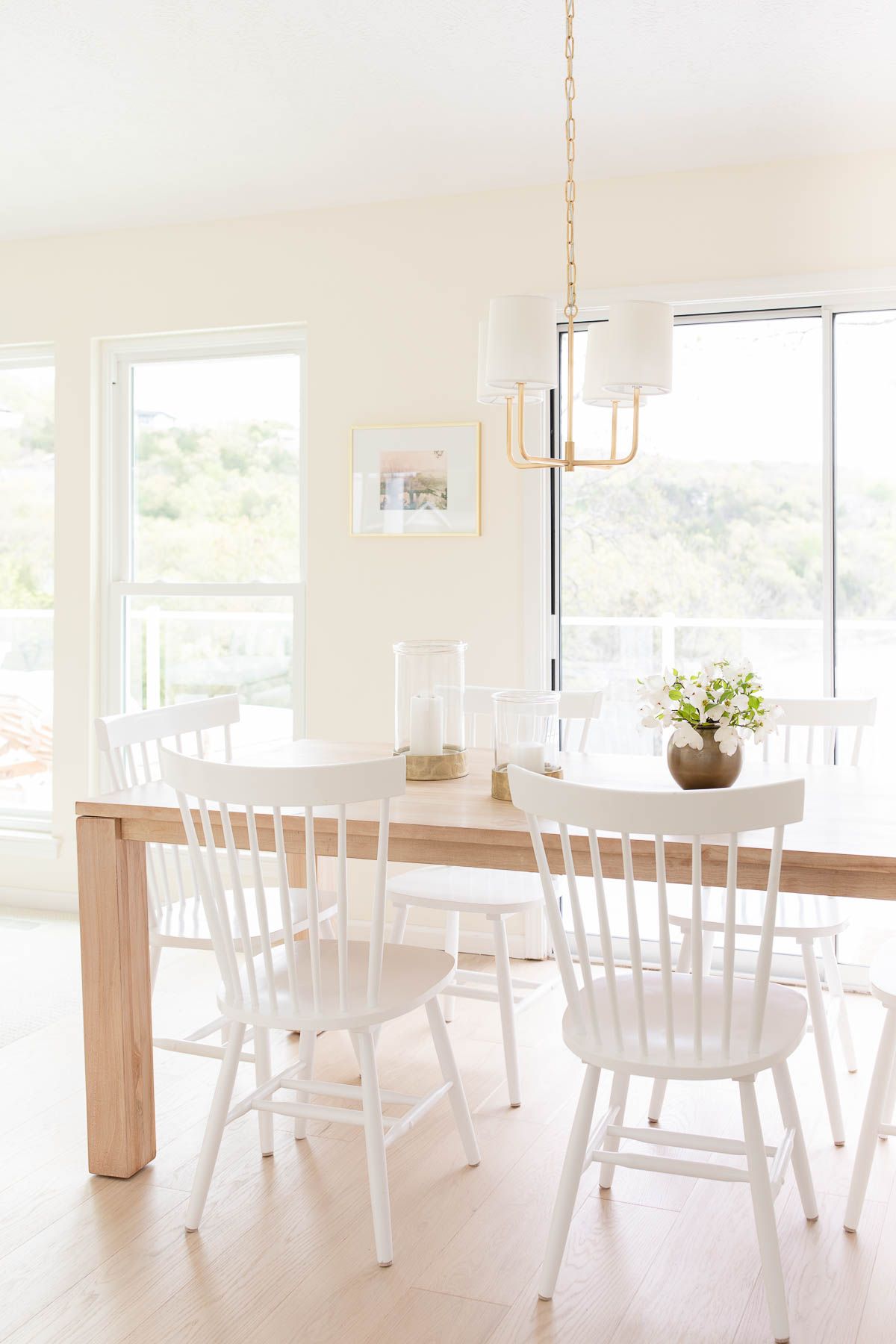
White Oak Floors
White oak floors are so beautiful and calming. The natural, subdued tone of the wood sets the foundation of the room – relaxing, casual, and livable. These floors capture the essence of what I’m all about – fuss-free living so I can enjoy the good stuff.
White oak flooring is sturdy and durable. It has a Janka hardness score of 1360, so it handles the daily wear and tear of life, kids, and pets.
White oak has a really beautiful and sleek grain that goes the length of the planks to help elongate the look of a room.
The undertones of white oak are more gray or brown, so it maintains the color integrity of the stain and absorbs it really well. The soft, warm color makes it very suitable for neutral color schemes.
The neutral tones of white oak work well with practically any color scheme you choose to do in your rooms, warm or cool. For a light and fresh look, stain your white oak hardwood flooring a lighter color.
This also smooths and blends the contrast in the grain for a very clean look. For more traditional, rustic, or just darker floors, a dark stain absorbs beautifully and lets the grain really stand out.
Another bonus to a white oak floor is that it holds up really well to moisture because it is closed-grain wood.
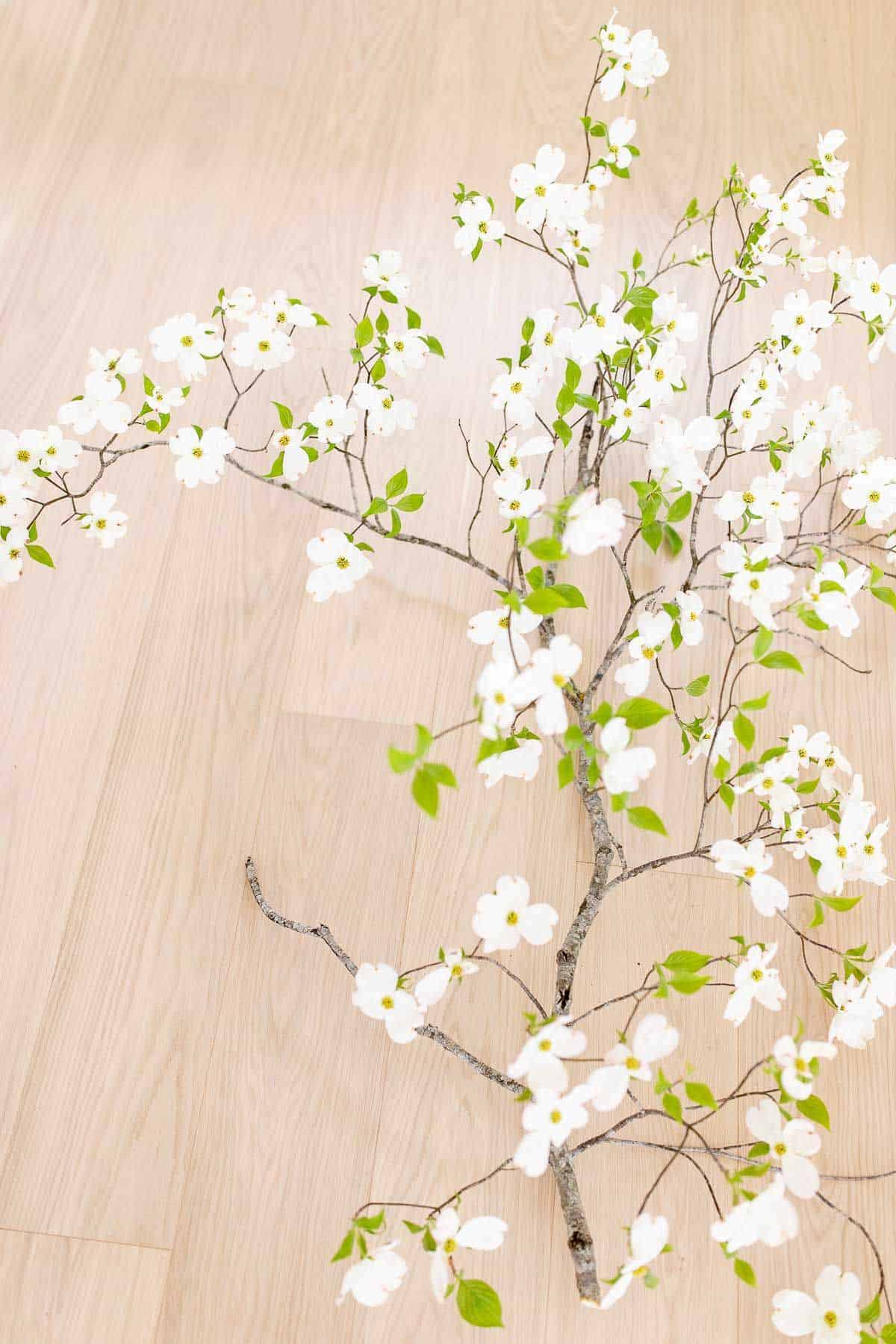
Red Oak Versus White Oak
Red Oak and White Oak flooring are both hardwood and are very durable, white oak being just a little harder and resistant to scratches and dents. They’re quality flooring products that will withstand daily use for years. But, just like their names suggest, their colors are quite different.
Red Oak has more pink and orange undertones, while white oak is neutral, with basic brown and tan undertones. They will both take to stain differently because of the undertones in them.
The pinks and oranges in the red oak will come through stain, making the same stain look different on red and white oak. The neutral tones of white oak will keep the rich color of the stain without altering its appearance.
White oak boards are naturally darker than red oak, but because they have neutral undertones, they are better suited for lighter stains. They’ll keep the color of the stain without adding the pink and orange undertones to the finished look.
The grain pattern is also different between the two types of oak. White oak hardwood flooring has a more subdued pattern, so it appears less busy. Red oak’s grain is a little more dramatic and pronounced.
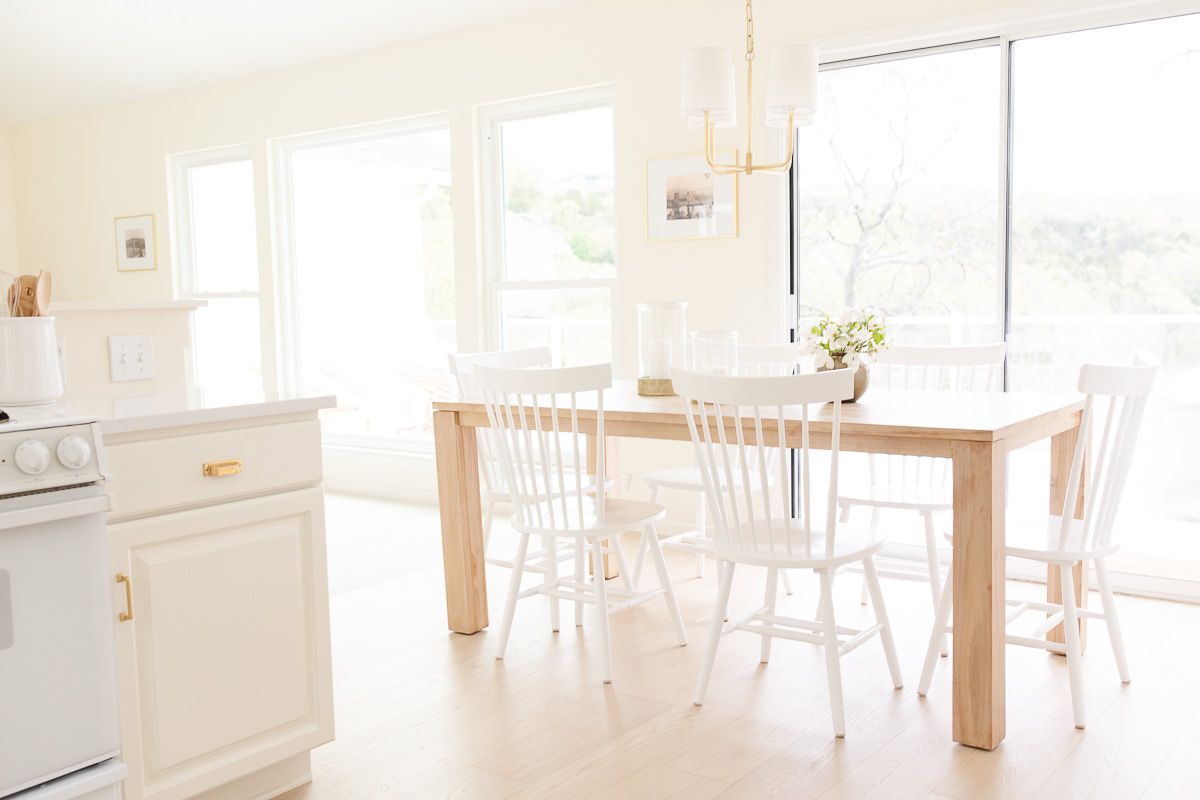
White Oak Engineered Flooring
Like any type of engineered flooring, white oak engineered flooring has layers that consist of a very stable core and a veneer of white oak on the top.
I chose to use white oak engineered flooring in our lake house because of its water resistance and cost effectiveness, and I love the way it looks in our home.
Pros
- Looks just like solid white oak flooring
- Less expensive than solid hardwood
- Very durable
- Resistant to moisture and temperature changes
- More environmentally-friendly
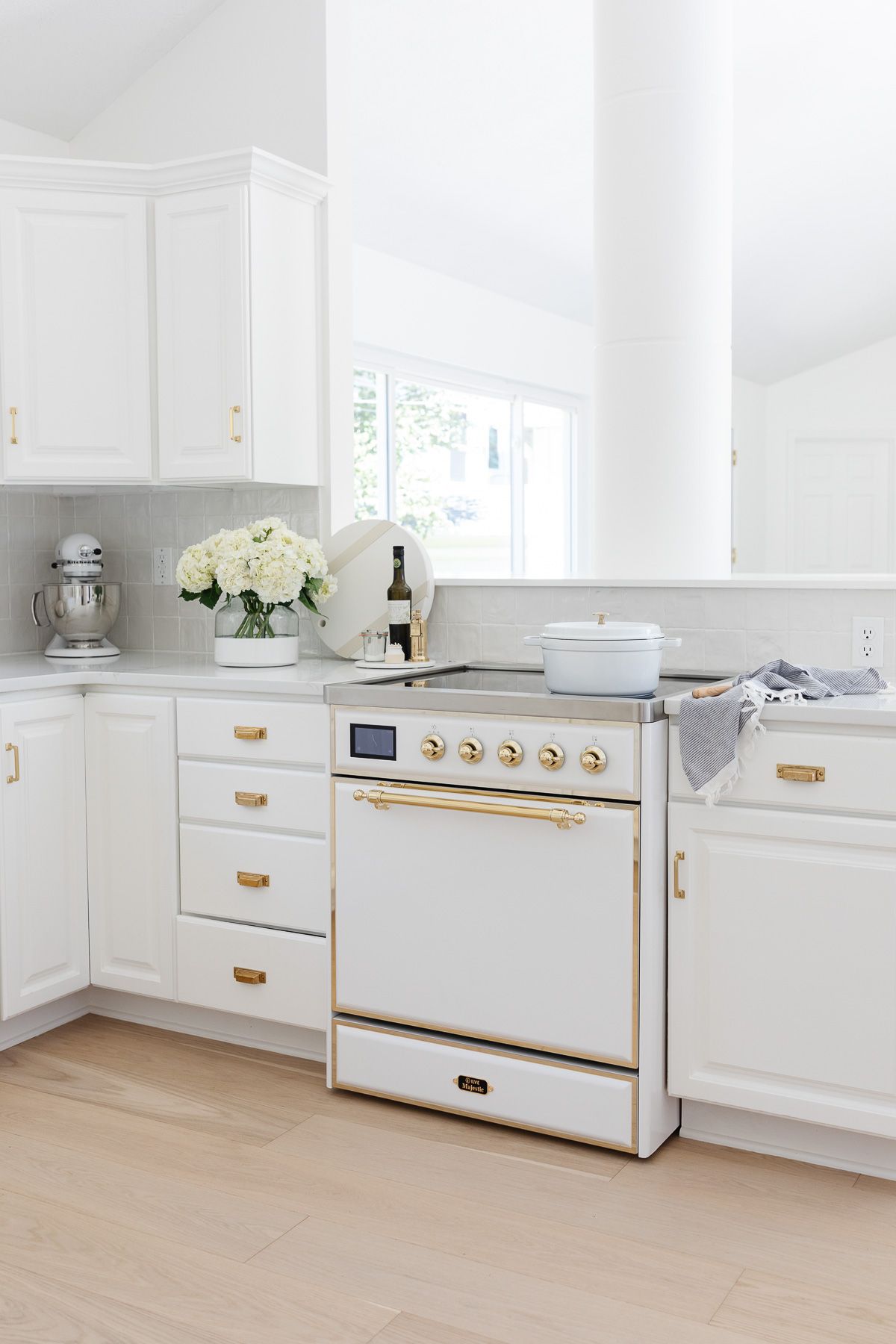
Cons
- Can’t refinish multiple times
- Quality varies from each manufacturer – find a reputable one
Sand and Stain
Sand and stain flooring is solid hardwood. It can be installed in its natural form, then leveled and sanded on site. This is helpful to get a perfectly level and smooth floor.
Then the floors are stained as one solid piece, rather than plank by plank. We went with sand and stain white oak hardwood flooring in our home because of its beautiful, clean, and contemporary look.
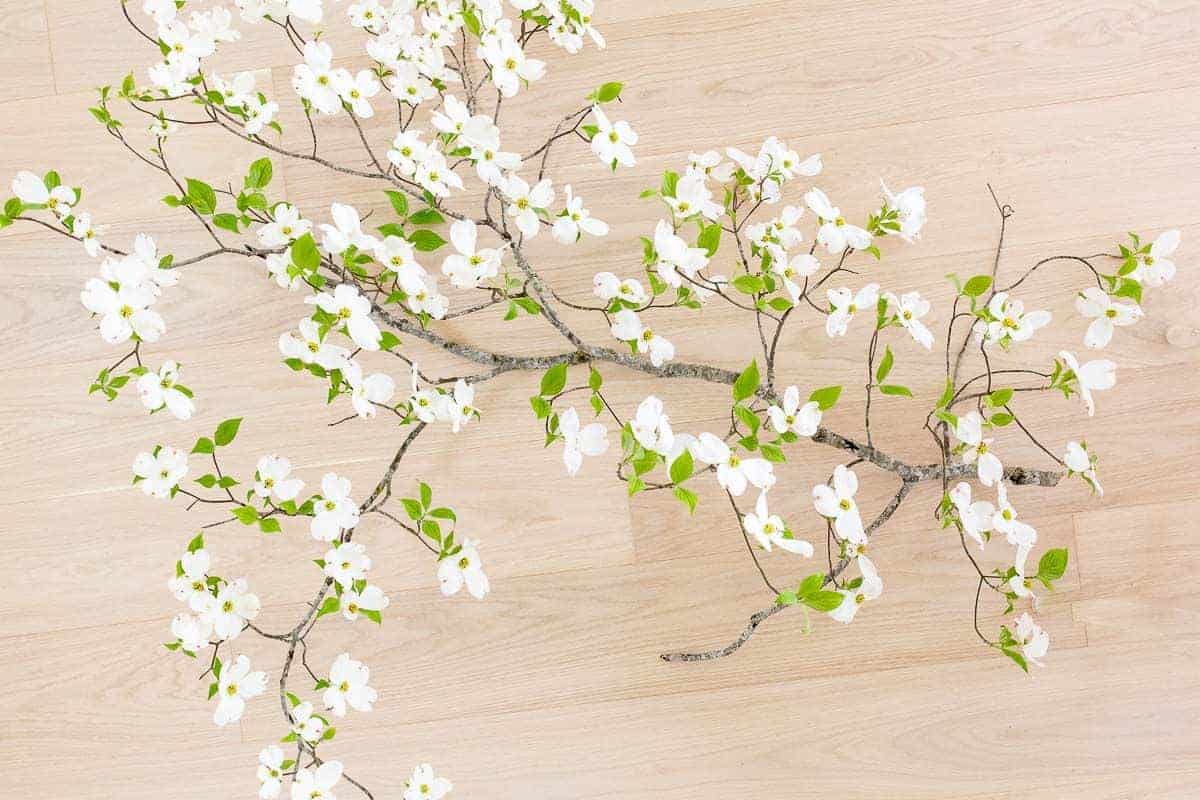
Pros
- Gorgeous
- Can be sanded and stained multiple times
- Durable and moisture resistant due to closed-grain wood
Cons
- Solid hardwood is more prone to warping in extreme temperature and moisture changes
- Refinishing is a lot of work and time-consuming
Wide Plank Oak Flooring
A standard width for plank flooring is from 2.5 to 4 inches. Wide plank flooring is anything wider than that. Wide plank white oak flooring is lovely and allows the grain to really develop through a board, without having to have as many seams running through a room.
It tends to be more expensive than narrower planks because it requires harvesting and cutting wider and longer trees.
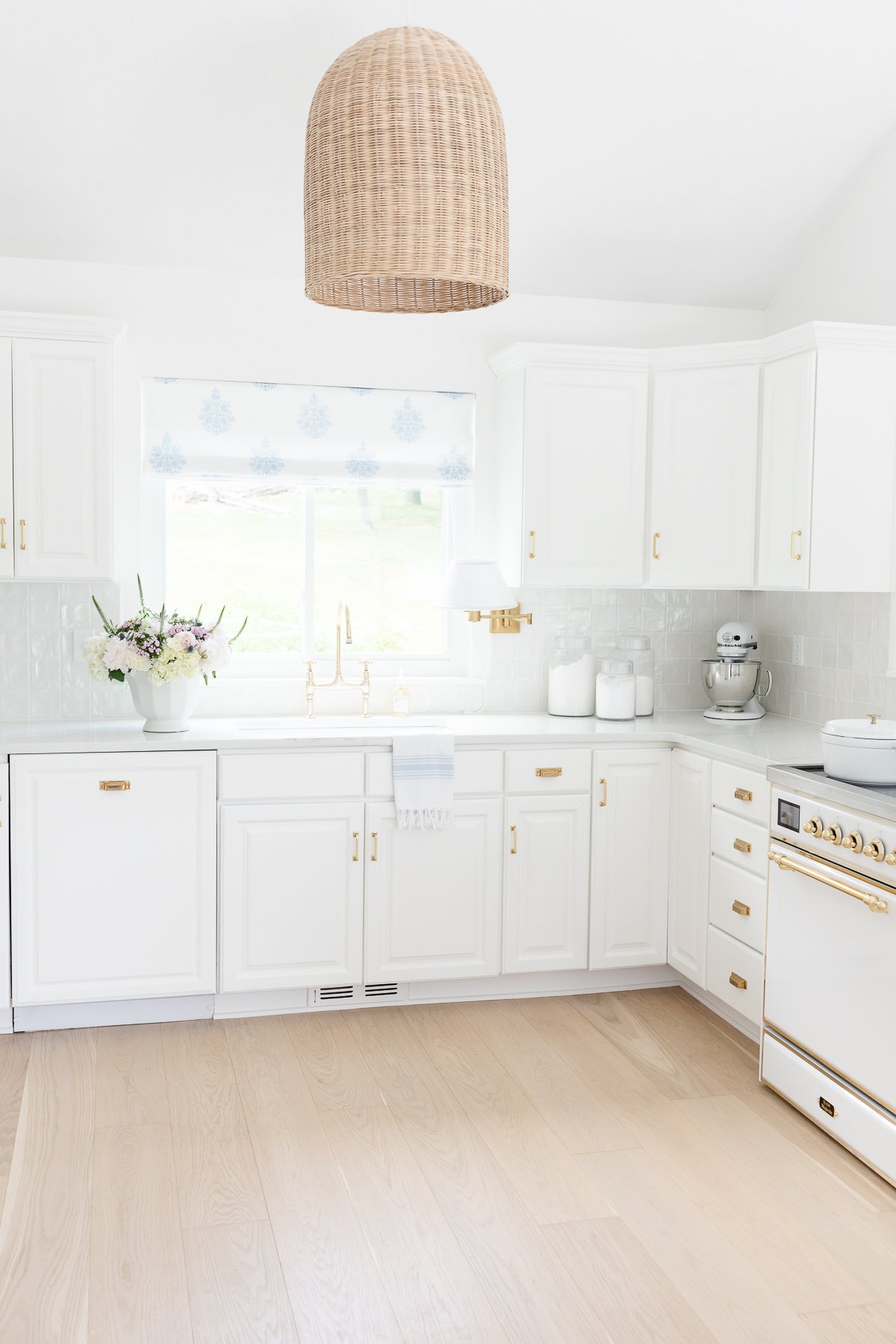
Wide plank white oak flooring is installed the same way as standard sized boards, although more skill is usually required the wider the boards get. It can be purchased in sand and stain as well as engineered hardwood. So, you can still stain them to get the color that you want.
The wider the plank, the more susceptible it is to warping with moisture and temperature changes. Do plenty of research and discuss with trusted experts to decide what size is right for you.
Caring for a White Oak Floor
As with all solid hardwood and engineered hardwood, white oak requires attention and care, including:
- Wipe up spills quickly to keep liquids from soaking into the wood.
- Keep floors free from dust and dirt as much as possible.
- Remove shoes, if possible.
- Put furniture pads on the bottom of furniture to avoid scratching the surface.
- Use a wood cleaner – rather than harsh chemicals – to clean your floors.
- Buff and refinish every couple of years.
- Complete sand and stain every few years when necessary, depending on wear and tear and environmental factors.
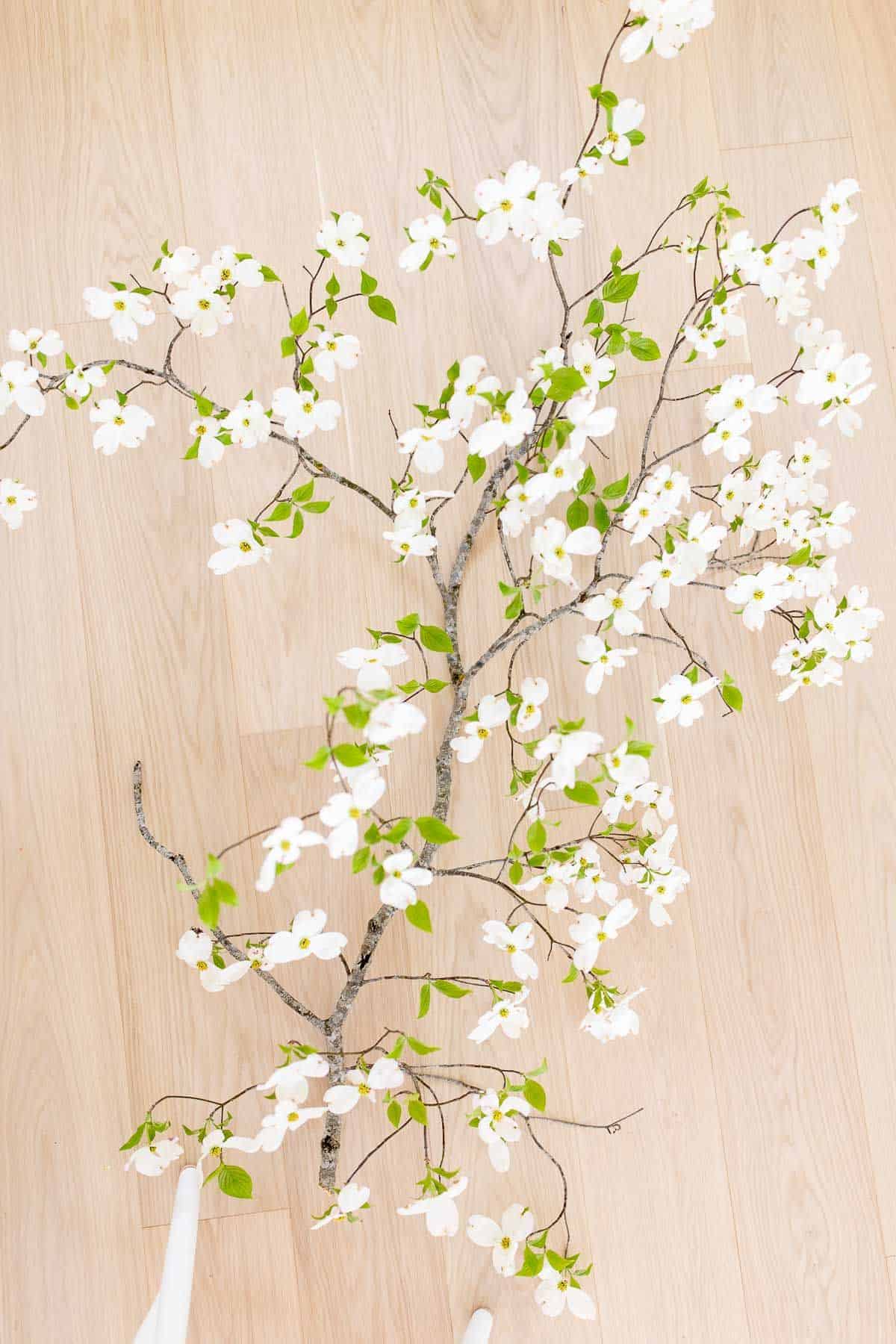
Sources
Our White Oak Floors
For our lake kitchen pictured in this post, we chose this Westridge Marley European Oak Wire-Brushed Engineered Hardwood.
- 5″ Wide Smooth Solid Oak Hardwood
- Euro White Oak Engineered Wood
- European French Oak Prefinished Engineered Wood
- Lemon Grass Oak
- Le Havre Oak Engineered Oak
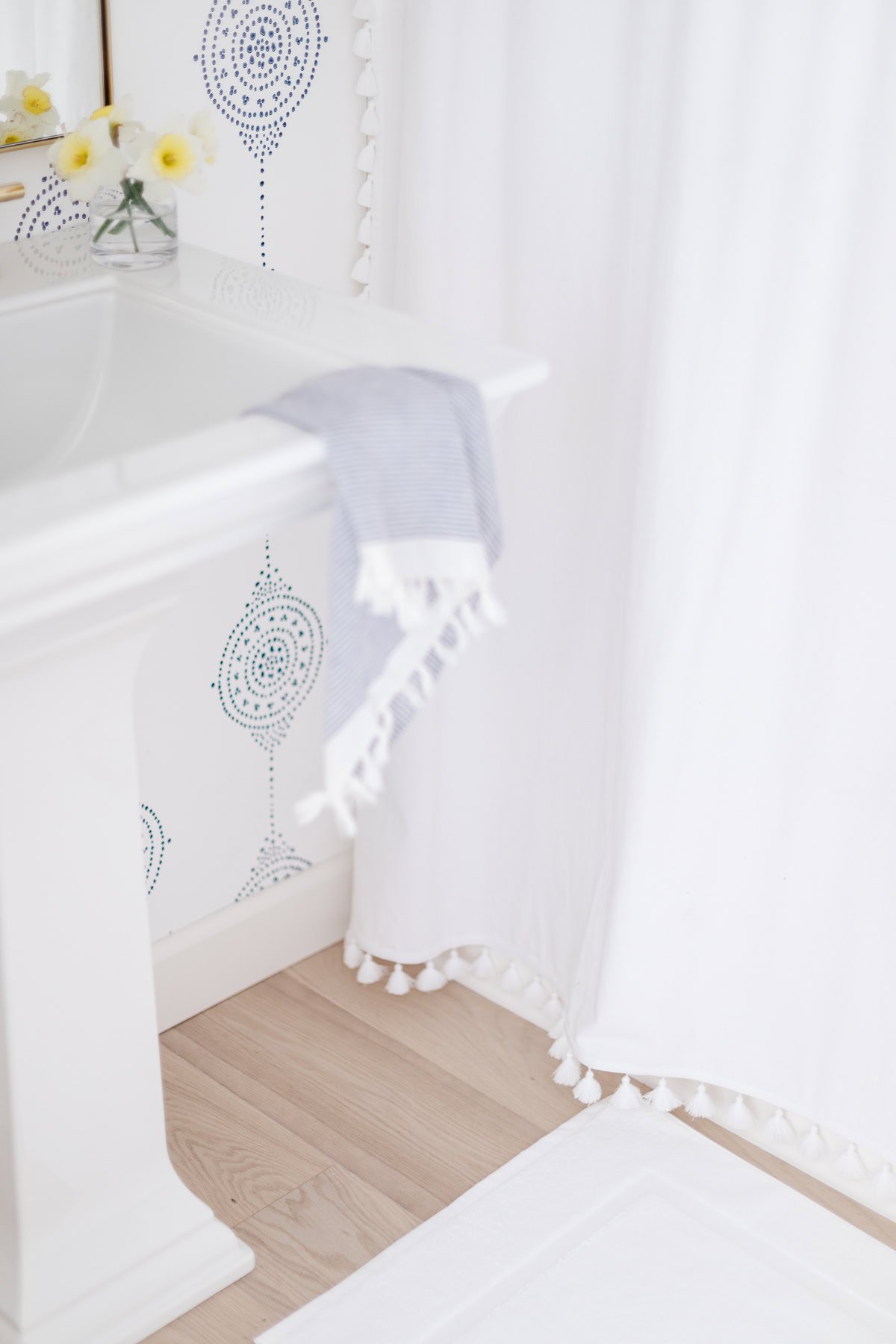

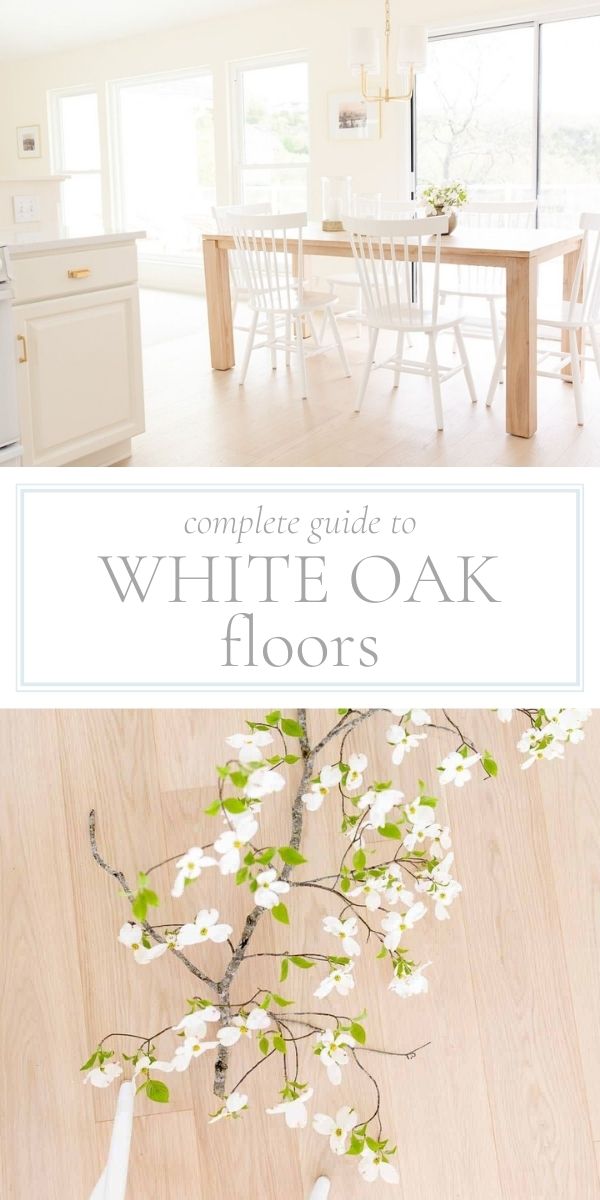
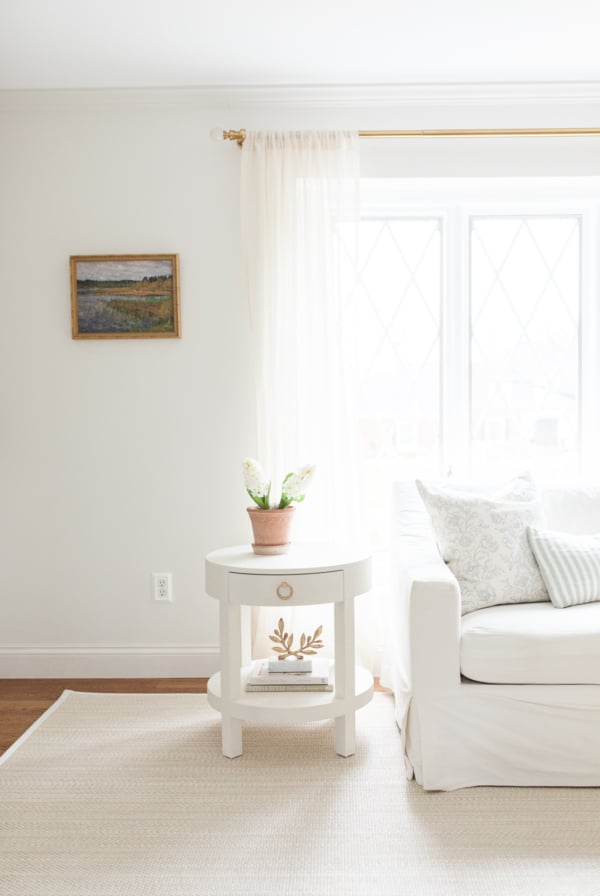
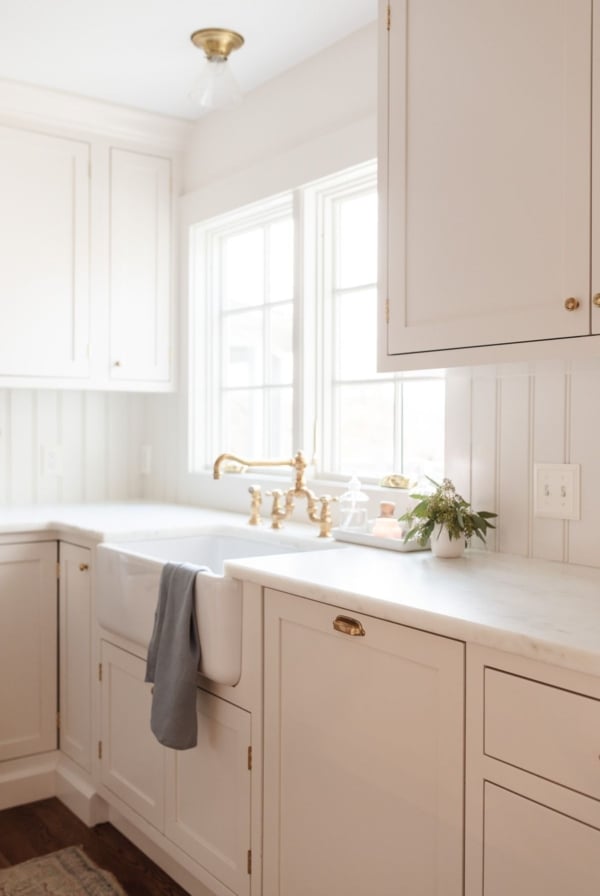
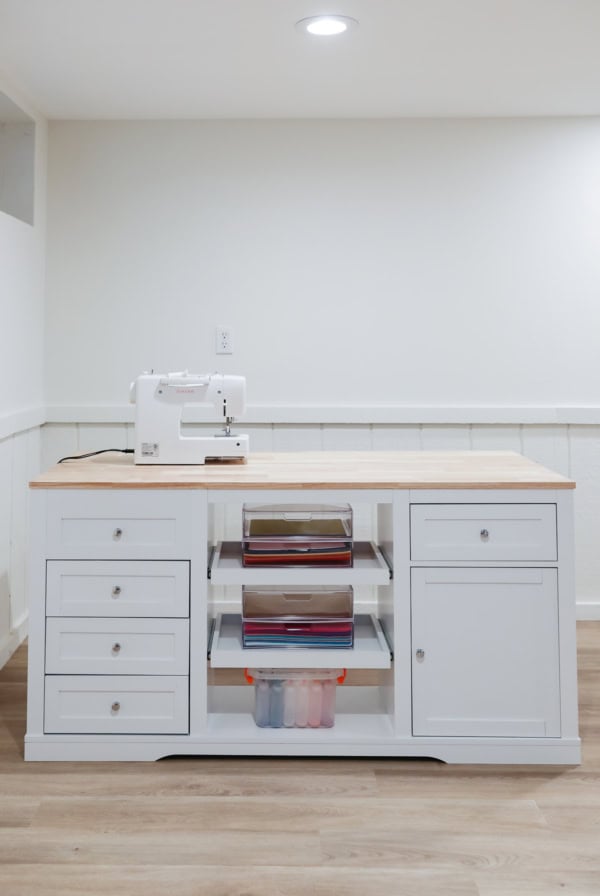






Hi Julie! Beautiful photos. We are purchasing a new home and are considering the same oak floors that you used. Are you still happy with the quality and durability now that it’s been a few years?
Hi Kate,
Our floors have held up beautifully! We’re so happy with our decision.
Good luck, and enjoy!
Julie
Hi! We are doing engineered whir oak floors in our lake house. Would you mind sharing what brand and color you did? Love them! Also – I might have sent the same question last night – can’t quite tell if it worked.
Hi Kathleen,
Our exact floors are linked towards the bottom of the post! Enjoy!
Julie
We are wanting to do the same – engineered white oak at our lake house. Do you happen to remember the brand and color you did for the engineered floors
What did you seal or finish your white oak floors with? We are about to sand and redo ours but they seem darker than your picture and I love the color of yours.
Ours were purchased finished
Beautiful home and floors! I love the kitchen table and chairs! Where are they from?
Thank you! The table is from a company formerly known as Design Ideas Ltd and the chairs are available here.